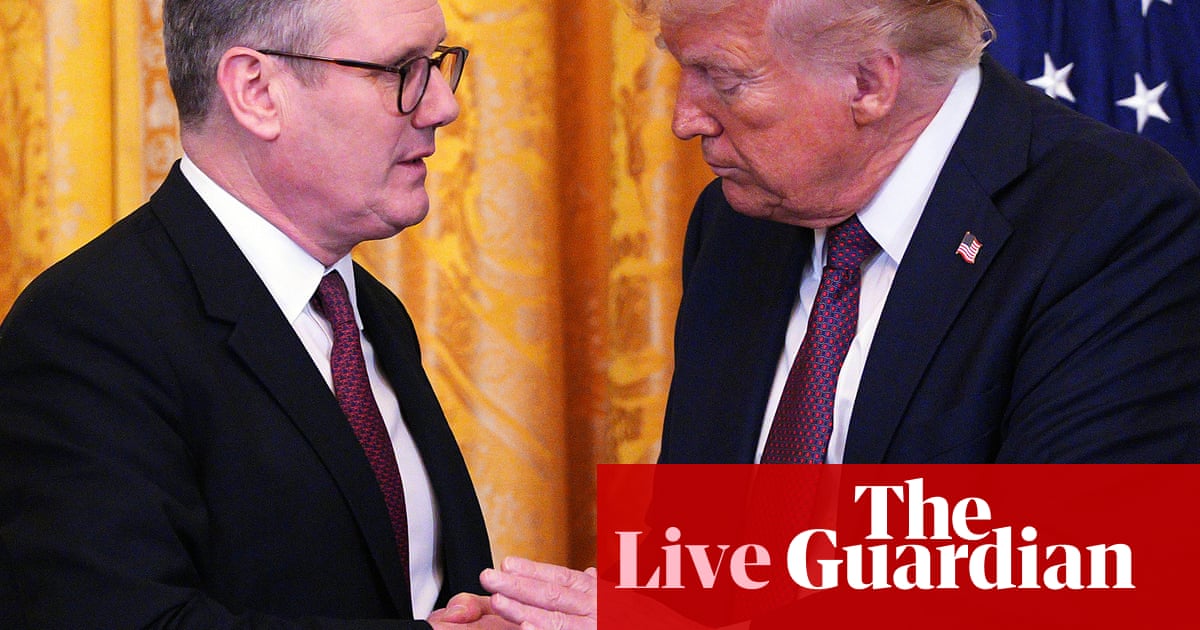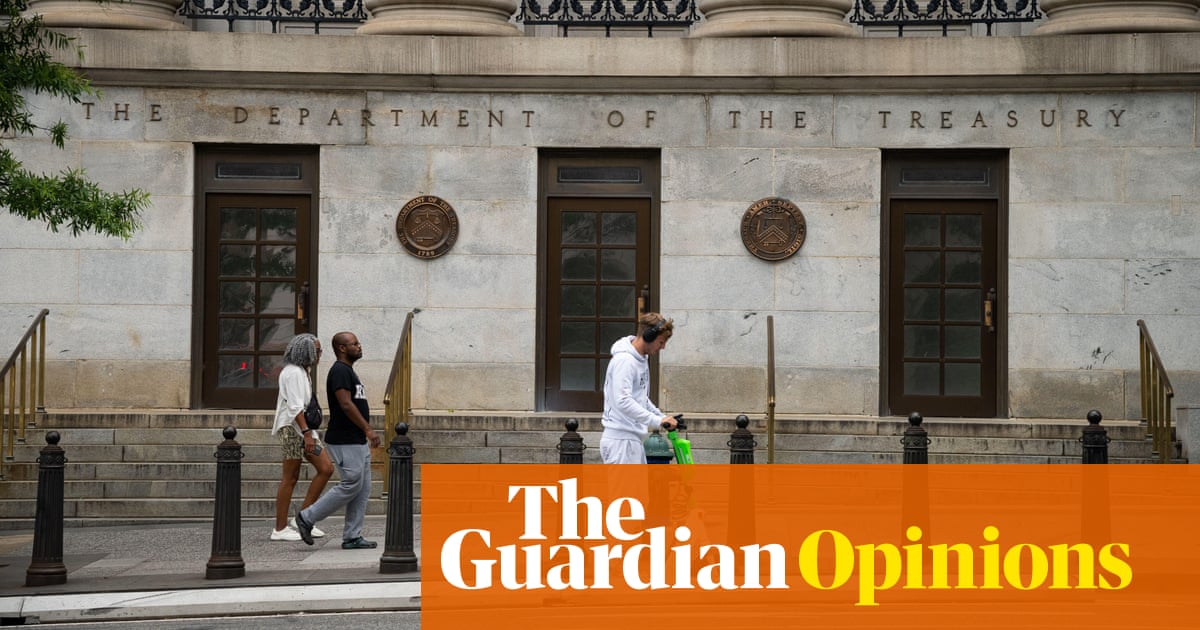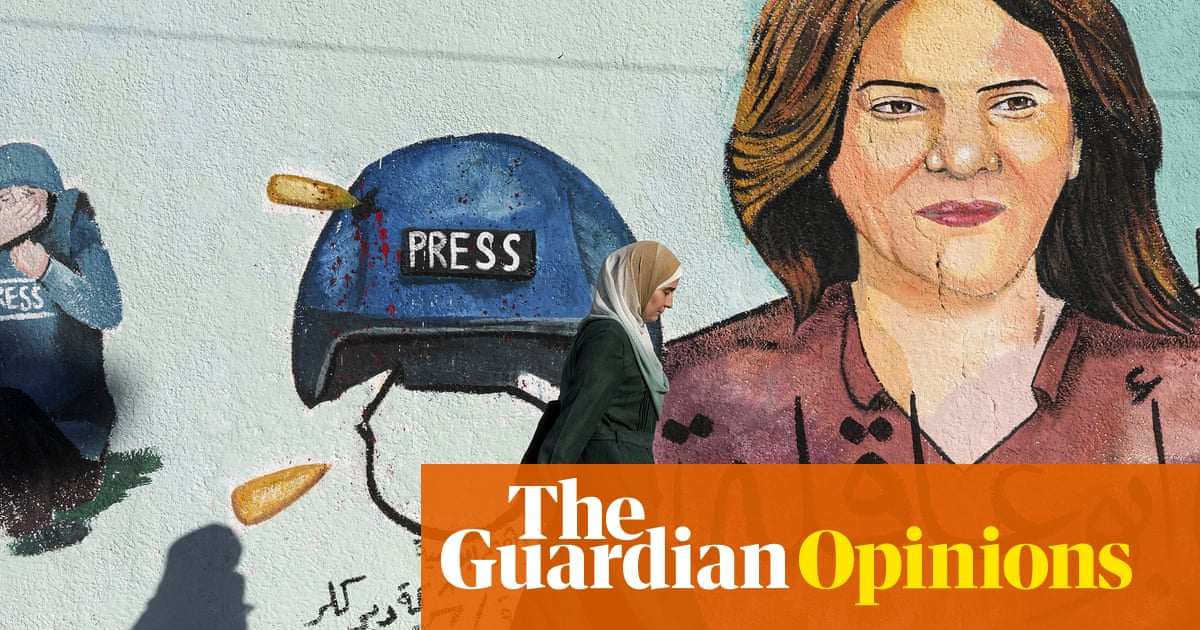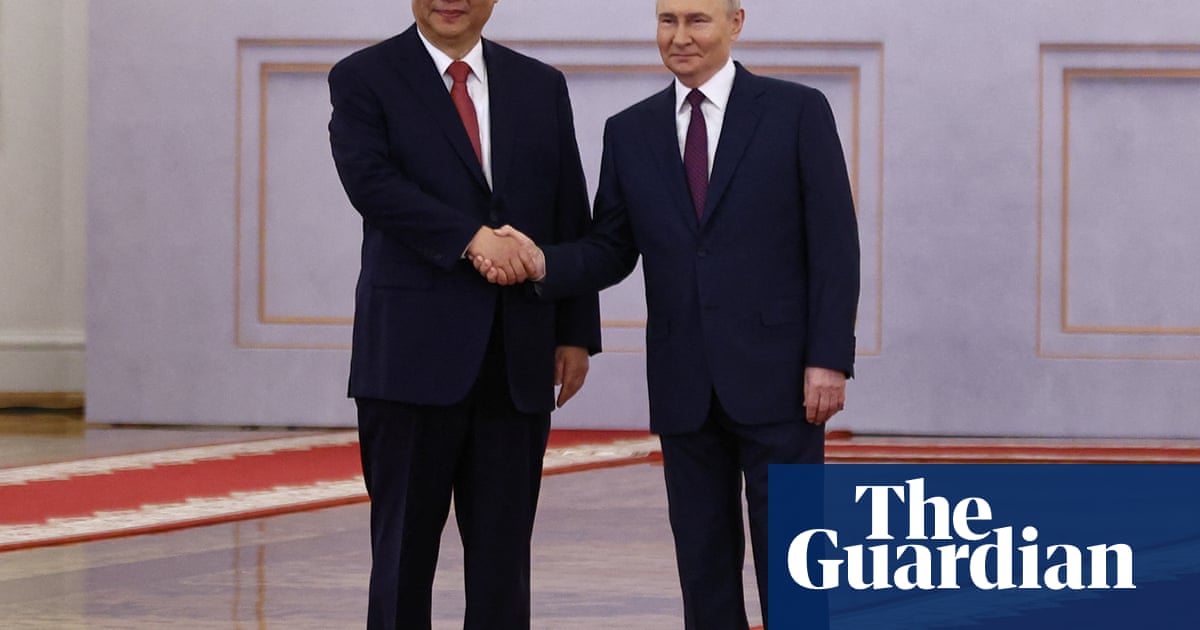Since Donald Trump launched his chaotic trade war earlier this year, it has become a truism to say he has plunged the world economy into crisis. At last month’s spring meetings of the World Bank and International Monetary Fund in Washington, where policymakers and finance ministers from all over congregated, the attenders were “shellshocked”, the economist Eswar Prasad, a former senior IMF official who now teaches at Cornell, told me. “The sense is that the world has changed fundamentally in ways that cannot easily be put back together. Every country has to figure out its own place in this new world order and how to protect its own interests.”
Trump’s assault on the old global order is real. But in taking its measure, it’s necessary to look beyond the daily headlines and acknowledge that being in a state of crisis is nothing new to capitalism. It’s also important to note that, as Karl Marx wrote in The Eighteenth Brumaire of Louis Napoleon: “Men make their own history, but they do not make it as they please.” Even would-be authoritarians who occupy the Oval Office have to operate in the social, economic and political environment that is bequeathed to them. In Trump’s case, the inheritance was one in which global capitalism was already suffering from a crisis of legitimacy.
Consider the decade before he was re-elected. In 2014, the global financial crisis and the Occupy Wall Street movement were fresh in the memory. The French economist Thomas Piketty appeared on bestseller lists around the world with his tome Capital in the Twenty-First Century, which highlighted income and wealth inequality. Bankers, billionaires and defenders of free market capitalism appeared to be on the defensive. “Nobody believes any more in a moral revival of capitalism,” wrote the German sociologist Wolfgang Streeck in the New Left Review. The “attempt to prevent it from being confounded with greed has finally failed, as it has more than ever become synonymous with corruption.”
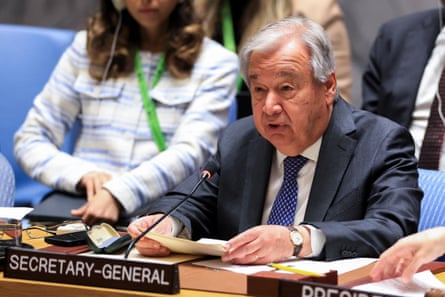
Move forward nine years to September 2023, and the 78th general assembly of the United Nations. “Our world is becoming unhinged,” António Guterres, the UN’s secretary general, declared. “Geopolitical tensions are rising. Global challenges are mounting. And we seem incapable of coming together to respond.” Guterres, a former prime minister of Portugal, mentioned the war in Ukraine and military coups in the Sahel, but the core challenges he cited were more systemic: inequality, rising debt levels, authoritarianism, financial architecture that was “dysfunctional, outdated and unjust”, and “the most immediate threat to our future: our overheating planet”. If the world didn’t tackle these issues quickly, Guterres warned, it faced the prospect of “a great fracture in economic systems and financial systems and trade relations.”
Declarations that global capitalism is in crisis are nothing new, of course. Ever since Marx and Engels’ Communist Manifesto, which appeared in 1848, critics have been predicting the system’s demise. In the 1940s, two of capitalism’s biggest champions – the Austrian free market economists Friedrich Hayek and Joseph Schumpeter – also argued that it was doomed. (To them, the fatal threats were socialism and bureaucracy.) During the post-second world war decades, many western countries moved in the direction of Keynesian social democracy, which was based on a social bargain between labour and capital, with restraints on the movement of financial capital. In the 1970s, this form of managed capitalism succumbed to what’s known as stagflation, the combination of high inflation and stagnant economic growth. This was replaced with the neoliberal experiment in unrestricted financialisation and globalisation that met its nemesis in the global financial crisis of 2008-09.
Since then, we have been in an interregnum characterised by the dominance of big tech, an intensifying climate crisis, a global pandemic and efforts across the political spectrum to imagine a new economic paradigm.
Even in the United States, where the mythology of private enterprise runs deep and movements hostile to capitalism have long struggled to attract mass support, public attitudes have been changed. A 2023 opinion poll found that “almost half of Americans, regardless of generation and race, say that capitalism is headed on the wrong path”. In the same year, American Compass, a new conservative thinktank based in Washington DC, published a long report entitled Rebuilding American Capitalism: A Handbook for Conservative Policymakers.
“What has happened to capitalism in America?” Oren Cass, a Republican policy analyst who worked on Mitt Romney’s 2008 and 2012 presidential campaigns, wrote in the introduction. “Businesses still pursue profit, yes, but not in ways that advance the public interest … Globalisation crushed domestic industry and employment, leaving collapsed communities in its wake. Financialisation shifted the economy’s centre of gravity from Main Street to Wall Street, fuelling an explosion in corporate profits alongside stagnating wages and declining investment.”
Also in 2023, a report from another conservative American thinktank, the Edmund Burke Foundation, said that “transnational corporations showing little loyalty to any nation damage public life by censoring political speech, flooding the country with dangerous and addictive substances and pornography and promoting obsessive, destructive personal habits”.
In some ways, these conservative criticisms echoed what leftists had been saying for generations. In others, they evoked the writings of the 19th-century arch-conservative Thomas Carlyle, who lamented the social degradations of industrial capitalism and described the pursuit of profit at any cost as: “One of the shabbiest gospels ever preached on earth.”

Conservatives were also having difficulty justifying the emergence of a new plutocracy whose conspicuous consumption evoked the Gilded Age “captains of industry”. Amazon’s Jeff Bezos took possession of a custom-built 417ft-long superyacht that came with a helipad-equipped support vessel and was rumoured to have cost $500m. Meta’s Mark Zuckerberg was building a 560-hectare compound in Hawaii that reportedly included a blast-proof underground bunker. It didn’t take great observational powers to realise that Bezos, Zuckerberg and other tech barons were milking vast monopolies that were largely oblivious to competition, and, in the US at least, government oversight.
The Covid shutdowns dealt another blow to champions of globalised capitalism by highlighting the dangers of relying on the profit motive to organise the production of vital goods. When the global supply chain froze up, many western countries were left short of items like respiratory masks, diagnostic testing kits, computer chips and baby formula. “The industries at the centre of the supply chain – from shipping and rail to meat processing – had liberated themselves from rules imposed to limit their dominance,” wrote the New York Times journalist Peter S Goodman in his illuminating 2024 book How the World Ran Out of Everything. “They had reprised the era of the robber barons in achieving monopoly status. This had delivered stupendous profits to shareholders while yielding danger and dysfunction for society at large.”
Before the start of the pandemic, Trump had spent three years in office sounding off against the “globalists”. Although the trade restrictions he introduced during his first term were small beer compared with what he has unleashed in 2025, the difference can largely be ascribed to the fact that he was less sure of himself back then, and he took more notice of his advisers. But his political brand was built on a rejection of globalisation and free trade, and the institutions that underpinned them. During his 2016 presidential campaign, he labelled Nafta and the World Trade Organization a “disaster” and pledged to withdraw the United States from the Trans-Pacific Partnership, a trade deal that the Obama administration had negotiated with 11 Pacific Rim countries.
This message resonated with voters who lived in manufacturing areas that had been exposed to cheap foreign competition, particularly from China. In a paper published after the 2016 election, the economists David H Autor, David Dorn, Gordon H Hanson and Kaveh Majlesi said they had identified a link between trade shocks and voting patterns in presidential elections going back to 2000. In areas of the US where there had been rising competition from imports, the Republican candidate gained more votes.
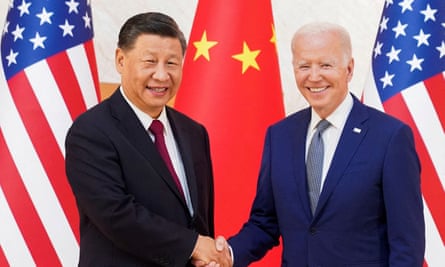
The suggestion that trade and globalisation may have cost the Democrats the 2016 election was hotly disputed. Other studies found that race, religion and other cultural factors played a bigger role than economics in Trump’s victory. But many Democrats interpreted his success as a rebuke of the pro-free trade policies that the party had adopted since the 1990s. When Joe Biden entered the White House in 2021, he left some of Trump’s tariffs in place and introduced an ambitious industrial policy designed to boost US manufacturing and “onshore” production that had moved abroad. In 2024, before he left office, Biden raised some tariffs on Chinese goods to a rate of 100%. Biden’s levies were much more targeted than the blanket tariffs Trump has introduced in recent months. But they demonstrated that, at least as far as relations with China went, Washington’s abandonment of the open-trade model of global capitalism reflected a bipartisan consensus.
Trump 2.0 represents a melange of populist economic nationalism, Silicon Valley accelerationism and feed-the-rich tax policies that can be traced back to Ronald Reagan. Each of these elements is supported by different interests with different goals, so it was predictable that the administration would be characterised by policy clashes and cognitive dissonance. Still, Trump himself has some clear goals. One of them, obviously, is enriching himself and his family, as evidenced by his embrace of crypto. (According to a recent report by a watchdog group that tracks Trump’s activities, the family’s net worth has risen by $2.9bn during the past six months based on the market value of its various crypto investments.) On a broader horizon, he is intent on reshaping global capitalism into a system of national or regional blocs, each protected by largely closed borders and high tariff walls.
Efforts on the left to construct a new economic model are still very much a work in progress. To some environmentalist activists, climate breakdown demands that we abandon a central tenet of capitalism: the notion that it can keep growing for ever. “We are in the beginning of a mass extinction, and all you can talk about is money and fairytales of eternal economic growth. How dare you,” Greta Thunberg, the young Swedish activist, said at a UN climate change summit in 2019.
Thunberg has associated herself with degrowth, an international movement whose intellectual origins lie in the Limits to Growth debate of the 1970s. The modern degrowth movement encompasses some different viewpoints, but they all reject maximising GDP growth as the primary goal of economic policy. “The faster we produce and consume goods, the more we damage the environment,” Giorgos Kallis, an ecological economist at the Autonomous University of Barcelona, wrote in his 2018 book Degrowth. “If humanity is not to destroy the planet’s life support systems, the global economy should slow down.”
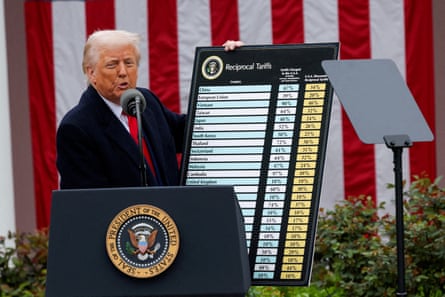
Some western governments, and the World Bank, have endorsed “green growth” – the idea that the development of renewable energy sources and the spread of electronic vehicles, heat pumps and other clean technologies will allow rising GDP to “decouple” from higher emissions. Some green growth enthusiasts point to the United Kingdom, which cut its carbon emissions in half between 1990 and 2022, even as its inflation-adjusted GDP rose by about 80%. This reduction was achieved largely by eliminating coal-fired power stations and replacing them with a combination of renewable energy sources and natural gas. In April 2024, 59% of Britain’s electricity came from renewables.
Sceptics of green growth point out that most rich countries haven’t matched the UK’s performance and that the developed world, taken as a whole, had failed abjectly to meet the commitments it made in the 2015 Paris agreement, which were designed to limit the global temperature increase to 1.5C above preindustrial levels. “At the achieved mitigation rates, these countries would on average take more than 220 years to reduce their emissions by 95%, emitting 27 times their remaining 1.5C fair-shares in the process,” Jason Hickel, an anthropologist at the Autonomous University of Barcelona, and Jefim Vogel, a PhD student at the University of Leeds, wrote in a study published in The Lancet Planetary Health in 2023.
The degrowth movement isn’t just about tackling the climate crisis. It draws on an intellectual tradition of scepticism towards industrial capitalism and mass production that dates back to Carlyle, John Ruskin, the Indian economist JC Kumarappa, who advised Gandhi, and EF Schumacher, the author of the 1973 book, Small is Beautiful. In his 2017 book Prosperity Without Growth, Tim Jackson, an ecological economist at the University of Surrey, called on advanced countries to shift their economies towards local services, such as nursing and teaching, and the development of more rewarding and less resource intensive professions like handicrafts. “People can flourish without endlessly accumulating more stuff,” Jackson wrote. “Another world is possible.”
Yet proposals to abandon economic growth have also been met with scepticism. As the Oxford economist Wilfred Beckerman pointed out in the 1970s, strong growth during the postwar era helped raise wages and keep distributional conflicts in check: the subsequent slowdown coincided with rising political polarisation. At the global level, the key issue is whether degrowth would impose intolerable burdens on the world’s poorest countries, which would love to follow the growth paths that China and India have trodden in recent decades. And it isn’t just the poorest countries that want to grow faster. On a global basis, according to the World Bank, the median household income in 2022 was just $7.75 a day.
In a 2021 blogpost, Branko Milanović, an economist specialising in inequality, explored two options for keeping global GDP constant, which is the most literal definition of degrowth. The first involved freezing world income distribution, so that everybody kept their current incomes. In this scenario, Milanović pointed out, about half the world’s population would be forced to live permanently on seven dollars a day or less, which surely wouldn’t be acceptable. The second option involved reducing the living standards of people with incomes above the global average and raising the living standards of those below the average. According to Milanović’s calculations, this policy would affect anyone living on more than 16 dollars a day. In western countries that’s about 86% of the population. The degrowthers “cannot condemn to perpetual poverty people in developing countries who are just seeing the glimpses of a better life, nor can they reasonably argue that incomes of 9 out of 10 westerners ought to be reduced,” Milanović wrote. “The way out of the impasse is to engage in semi-magical and then outright magical thinking.”
Degrowthers contest this, of course. But on much of the left the focus is on making growth greener rather than abandoning it, and on trying to address other enduring problems, including poverty, stagnant wages, monopoly power and tax avoidance by the rich. In a 2019 essay, Economics After Neoliberalism, the Harvard economist Dani Rodrik, Columbia’s Suresh Naidu and Berkeley’s Gabriel Zucman presented an extensive list of policy ideas, including establishing wage boards in low-wage industries to rein in employers’ market power; expanding early childhood education programmes as a means of raising the lifetime incomes of children from poor families; tackling tax avoidance by taxing multinational corporations where they make their sales; reforming the patent system to reduce the monopoly power of big pharma and other intellectual property holders; beefing up international financial regulation; and including labour standards in trade agreements.
The assumption underlying this expansive agenda is that there is no quick fix for 21st-century capitalism: the entire system needs a makeover. Referring to the work of Karl Polanyi, the Austro-Hungarian economic historian who regarded the “free market” as a utopian pipe dream, Rodrik, Naidu and Zucman wrote: “These proposals take Polanyi’s words to heart. To work well, crucial markets (including markets for labour, land and capital) must be embedded in nonmarket institutions, and the ‘rules of the game’ must be supplied by government.”
The mention of Polanyi was a reminder of what is at stake in these policy debates. In containing capitalism within a new set of rules and social norms, postwar Keynesian social democracy seemingly refuted Polanyi’s argument, which he made during the 1930s, that socialism or fascism was the logical end point of the system. Keynesianism established a middle ground. But when neoliberalism supplanted it, capitalism again broke free of its bounds, with disastrous results.

The challenge now facing the centre-left is to construct a new managed capitalism for a globalised, tech-dominated and finance-driven world in which the labour movement is nowhere near as powerful as it was in the middle of the 20th century. In a paper published in 2021, the economists Samuel Bowles, of the Santa Fe Institute, and Wendy Carlin, of University College London, argued that efforts to build a new economic paradigm should be organised around “shrinking capitalism” to a “diminished space” where it could do less damage, and its strengths, such as its capacity to spur innovation, would serve the community. Political and economic forces were aligning with this new paradigm, the two economists argued. Concerns about the climate emergency and inequality were undermining support for capitalism in general terms, while the rise of AI and robotics was undermining the traditional hierarchical capitalist firm, in which workers carried out routine, preassigned tasks for a set wage or salary. More flexible forms of economic organisation were emerging, such as open-source collaborations and the gig economy, in which many workers were nominally self-employed.
Bowles and Carlin weren’t endorsing the practices of platform companies, like Uber and Lyft, that rely on gig workers. They were arguing that technology-driven capitalism was, to some extent, eating itself, and that this cannibalisation was creating space for alternative economic models, including some that have long existed but could in the future have broader appeal, such as not-for-profits, worker-owned cooperatives and community-organised public commons. “This is a confluence that could propel a new paradigm in political economy to dominance,” the article concluded.
Perhaps a new economic paradigm will emerge, but Trump’s re-election and the rising support for rightwing populism in other western countries, including Britain, raises the question of what sort of paradigm it will be. When the Italian Marxist Antonio Gramsci was languishing in Mussolini’s prisons during the 1920s and 30s, he thought deeply about the relationship between broad economic forces and economic ideologies. In the prison notebooks he kept, he remarked how in certain circumstances the forces and ideologies come together in a “historical bloc” that can exercise political power through consent rather than force, a phenomenon he referred to as “hegemony”.
The managed capitalism of the postwar era was based on a bloc that combined blue-collar workers and their liberal-minded allies from the professional classes, domestically focused businesses, long-term capital and Keynesian/social democratic policy ideas. The globalised hypercapitalism of the post-cold war era was based on internationally minded businesses, educated workers whose jobs couldn’t be displaced by low-wage foreign competition, footloose capital and free market ideology. As we enter the second quarter of the 21st century, the question is what sort of bloc can exercise power in a world shrunken by digital technology but splintered by nationalism.
Chinese state capitalism arguably represents one candidate, but its undemocratic nature has blunted its appeal to other countries. So has the slowdown in the Chinese economy since Xi Jinping took over in 2012. Trumpian economic nationalism is another contender. His return to the White House on a platform of tariffs and mass deportation of undocumented immigrants, which appeals to nativist voters and domestically oriented businesses, demonstrated that his victory in 2016 wasn’t a fluke.
To be sure, the presence in Trump’s circle of Elon Musk and various Wall Street tycoons who have benefited enormously from globalisation and financialisation highlights the glaring contradictions in the Maga movement, as does Trump’s commitment to preserving the regressive tax cuts that Congress passed during his first term. But none of this has prevented him and his allies from positioning themselves as outsiders attacking a corrupt establishment. This political confidence trick is embodied in the figure of JD Vance, Trump’s vice-president, who once worked for a venture capital firm and defended globalisation but now positions himself as an ersatz philosopher of the new right. At the 2024 Republican National Convention, Vance stated blithely, “We’re done … catering to Wall Street. We’ll commit to the working man.”

On the far left, replacing capitalism remains the ultimate goal. But with the exception of a few places, such as depressed parts of East Germany, there is little popular enthusiasm for reviving the communist model of state ownership and central planning. Many leftists are more interested in creating new institutions and communities that operate independently of the monolithic capitalist economy and the state, such as protest encampments, bartering and recycling networks, communal farms, and small-scale artisanal enterprises. Even though early 19th century figures like Robert Owen, William Thompson and Charles Fourier no longer figure prominently on the left, the goal of creating communities and subeconomies that operate beyond the cash nexus goes back to their efforts to create new cooperative communities. Two centuries on, their descendants have yet to demonstrate how they would overcome the practical problems that plagued their predecessors, especially if their ideas were applied at the national or global level. But the lure of what Silvia Federici, the co-creator of the Wages for Housework movement, has described as a “new commons” is a timeless one. “For what the commons in essence stands for,” Federici wrote, “is the recognition that life in a Hobbesian world, where one competes against all and prosperity is gained at the expense of others, is not worth living and is a sure recipe for defeat.”
The idea of shrinking capitalism seems like one that a broad range of people on the left and centre-left could unite around, from Federici to Bowles and Carlin to Joseph Stiglitz, the American liberal economist. In his 2024 book The Road to Freedom: Economics and the Good Society, Stiglitz called for a “decentralised economy with a rich ecology of institutions.” Noting the many encroachments that capitalism had made in recent decades, he wrote, “There must be large parts of the economy that are not and cannot be driven by profits. These include much of the health, education and care sectors, in which the narrow pursuit of profits often leads to perverse results.”
Stiglitz also called for restrictions on the activities of platform monopolies, particularly social media companies, arguing that their algorithms had “enabled the incitement of violence and the spread of hate speech and induced antisocial behaviour”.
Some of Stiglitz’s criticisms chimed with those of Federici, others with elements of the Edmund Burke Foundation’s report. This was a hopeful sign for efforts to create a broad coalition to rein in hypercapitalism. But no one should underestimate the opposition that such a project would face from big businesses that, in the US especially, can spend unlimited sums of money to influence the political system, and from longstanding defenders of the free market. In July 2023, dozens of the latter – including Jeb Bush, Karl Rove, and representatives of the Mont Pelerin Society, the American Enterprise Institute and the Capitalist League – issued a statement of principles proclaiming: “The free enterprise system is the foundation of prosperity.”
During the 1930s, American conservatives issued similar arguments in opposing FDR’s New Deal. In the early 1940s, Hayek issued his warning that the shift toward collectivism could lead to serfdom. More recently, many American conservatives have criticised the government response to the Covid 19 pandemic, which included large stimulus programmes. It wasn’t perfect, but it headed off a lengthy slump, and, in some of its particulars, it was highly illuminating. The American Rescue Plan Act of 2021 converted an existing programme of tax credits for low-paid workers with children into a monthly universal cash benefit of $300 per child. In the year after this policy was introduced, the rate of child poverty, as measured by the Census Bureau’s Supplemental Policy Measure, fell from 9.7% to 5.2%. In 2022, when the expanded tax credits were eliminated, the child poverty rate shot back up to 12.4% – the biggest one-year increase on record.
The lesson was clear: it is perfectly possible to reduce child poverty, just as it was possible in the 20th century to reduce old-age poverty by introducing state pensions. Capitalism can be reformed: the challenge is to summon the will and the means to do it. With the rise of rightwing populism, AI, and a tech/finance oligarchy that is openly exerting its political influence, the task can seem more formidable than ever.
But history counsels against despair. For more than 200 years, industrial capitalism has evolved in waves and counterwaves, some of which are driven by its inner conflicts, some by technological developments and others by political mobilisation. At any moment, it’s difficult (if not impossible) to tell how long the current configuration will survive, or what will succeed it. But the capitalist system isn’t handed down from the heavens and it cannot rest. This has been true throughout its existence. It will remain true until the critics who predict capitalism’s demise are eventually proved right.
Adapted from Capitalism and Its Critics: A Battle of Ideas in the Modern World by John Cassidy, which will be published by Allen Lane on 13 May. To support the Guardian, order a copy from Guardianbookshop.com

 7 hours ago
10
7 hours ago
10



